Justin Gerlach
Nature Protection Trust of Seychelles. 133 Cherry Hinton Road, Cambridge CB1 7BX, UK.
Email: jstgerlach{at}aol.com
Nature Protection Trust of Seychelles (NPTS) has been working to save the Seychelles giant tortoises and terrapins from extinction since 1997. This work has been generously supported by the British Chelonia Group from the outset. The work of NPTS has been summarised several times before (Gerlach, 2003, 2005); here I update the history of our work and the dramatic closure of the projects at the start of 2011.
Background
Historically, giant tortoises were present on most of the high islands of the Western Indian Ocean, and on several of the coral islands. Shortly after humans arrived on the islands these populations were driven to extinction, resulting in the complete extinction of giant tortoises from Madagscar at least 750 years ago, all tortoises from the Mascarenes (genus Cylindraspis) by the early 1800s and most of the Seychelles tortoises by 1840 (Gerlach, 2004). By then the only wild giant tortoises in the Indian Ocean were those on Aldabra and possibly a few on the Seychelles islands of Mahé, Silhouette and Cerf.
The identity of the surviving Seychelles-Aldabra tortoises remains the subject of great dispute. Firstly the name of the Aldabra tortoises is the source of ongoing argument; it is either Aldabrachelys gigantea or Dipsochelys dussumieri (Testudo gigantea, Geochelone gigantea or Dipsochelys elephantina are not available for various reasons). The International Commission on Zoological Nomenclature is currently deliberating on making a definitive ruling on this issue; until that has been done I continue to prefer D. dussumieri. The tortoises of the Seychelles islands show some differences from the Aldabran ones, but there is no consensus as to whether these are different species, subspecies or morphotypes. At present they are listed by the Tortoise and Freshwater Turtle Specialist Group (Turtle Taxonomy Working Group 2010) as subspecies:
Aldabrachelys g. gigantea or Dipsochelys d. dussumieri – Aldabra giant tortoise
A. gigantea daudinii or D. dussumieri daudinii – Daudin’s giant tortoise (extinct)
A. gigantea arnoldi or D. dussumieri arnoldi – Arnold’s giant tortoise
A. gigantea hololissa or D. dussumieri hololissa – Seychelles giant tortoise
In 1997 the Seychelles Giant Tortoise Conservation Project was established to save the arnoldi and hololissa forms from extinction. With this aim, captive breeding facilities were established on Silhouette island as NPTS had been invited to manage conservation on the island by the island’s management (Islands Development Company [IDC], a Seychelles government company charged with developing the islands).
In July 1997 eight giant tortoises of the Seychelles giant tortoise D. hololissa (four males, two females) and Arnold’s giant tortoise D. arnoldi (one male, one female) were purchased and transported to Silhouette island. A further two male and two female D. arnoldi were added to the project in 1998. The first clutch of eggs was produced in 1999 but they were infertile. The first fertile eggs were produced in 2002 when the captive groups were reorganised, placing all 12 tortoises in the same enclosure. In 2002 two D. hololissa and three D. arnoldi hatched. Over the next eight years a further 175 tortoises were reared (Fig. 1).
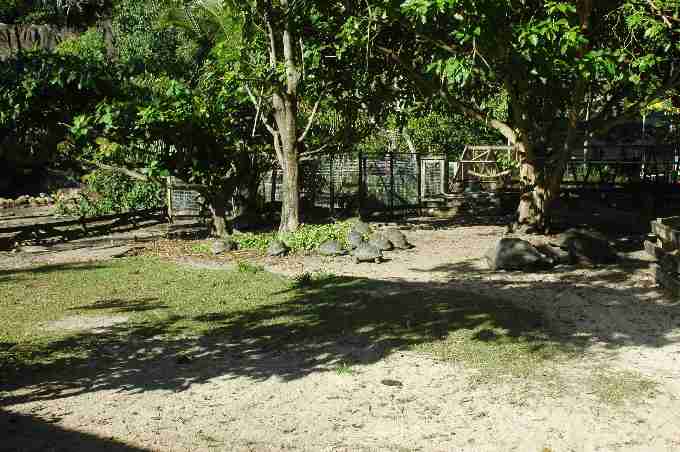
Fig. 1. Seychelles giant tortoise juveniles in the breeding enclosures.
In addition, NPTS established a Seychelles Terrapin Conservation Project for the conservation of the Critically Endangered black mud turtle Pelusios subniger parietalis and yellow-bellied mud turtle P. castanoides intergularis. Throughout the 1900s all Seychelles terrapins were in decline due to drainage of coastal wetlands. A survey of their distributions was carried out in 1996 and a status assessment was published in 2001 (Gerlach & Canning, 2001). This survey led to the initiation of the Seychelles Terrapin Conservation Project (Fig. 2) that aimed to breed them in captivity and establish new populations in secure areas.
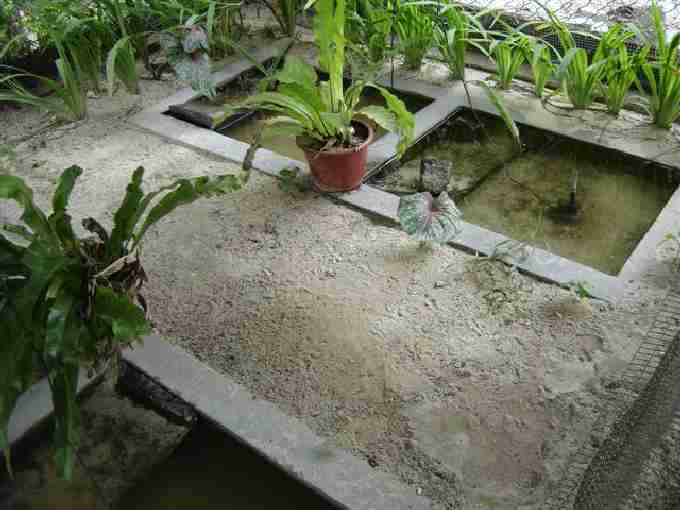
Fig. 2. Seychelles terrapin breeding facility.
Reintroduction of arnoldi tortoises
From 2002 to 2006 140 D. arnoldi juveniles were reared from two females and one male. In that year the adults were released into the wild at Grande Barbe on Silhouette and captive breeding of that species ceased, due to lack of space and labour to manage continued reproduction as such a high rate.
In December 2006 three male and two female D. arnoldi were released at Grande Barbe. The third female was on loan to the project and had to be returned to its owners. The Grande Barbe area was selected for the release as it provided a large area of suitable habitat, dominated by mixed vegetation resulting from the abandonment of agricultural plantations. Access to the site (solely by sea) was only possible for a few weeks of the year; this meant that theft of released tortoises was not a significant risk. The release was planned with the approval of the managers of the site and was carried out with the assistance of IDC. Regular monitoring of the tortoises was undertaken by NPTS, volunteers and an annual field course from Sussex University.
The tortoises did not disperse far, remaining within an area of about one hectare, except for one male that moved 200m in the first year. By 2008 this male had joined the others in their preferred small range. By 2010 the tortoises were mainly found around the edges of a marsh which their wallowing behaviour was maintaining (Fig. 3). In addition, they were having a significant impact on the nearby vegetation converting scrub invaded by alien plants into palm woodland (Fig. 4). Two nests were found in July 2007 and again in March 2011. Release of juveniles at Grande Barbe was planned for 2010.
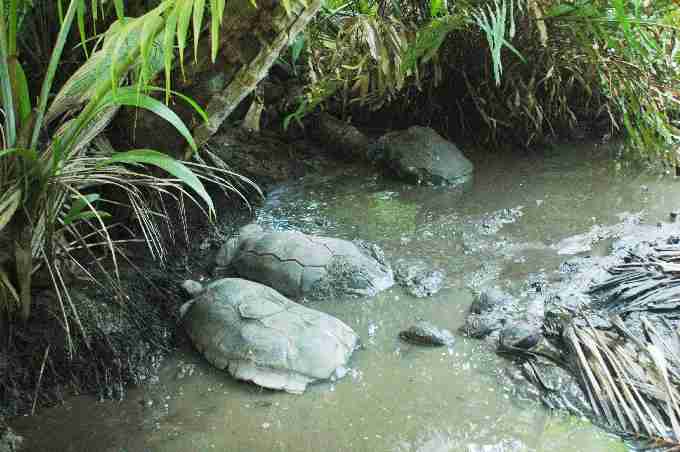
Fig. 3. Arnold’s giant tortoises in the marsh at Grande Barbe.

Fig. 4. Coconut woodland at Grande Barbe modified into open areas with endemic palm and tree seedlings (in foreground) by Arnold’s giant tortoises.
Breeding of hololissa
Breeding of D. hololissa continued at a much slower rate due to the presence of only one young breeding female, paired with a very old male. However, 40 juveniles had been produced by 2011. Release of the captive bred juveniles was expected to begin once 50 had been produced, and it was anticipated that this would start in 2012.
Terrapin status
Populations were monitored by visual searches of marshes and rivers, and trapping in all apparently suitable water bodies (Table 1); sites not trapped were considered unsuitable for terrapins on the basis of regular sea incursion or residents reporting the absence of terrapins. Trapping used baited hoop traps (described in Gerlach & Canning, 2001) baited with tuna in vegetable oil. This has been successful for catching both P. castanoides and P. subniger. Traps were emptied and re-baited every morning for at least four days and all terrapins caught were marked with marginal notches, sexed, measured (curved carapace length) and released next to the trap. After the initial study in 1996, specific localities were studied in more detail on a semi-annual basis. These were localities occupied by comparatively large terrapin populations (Rivière Mare Anglaise, Mahé and Anse Kerlan, Praslin), or where observations suggested the possibility of the occurrence of the probably extinct species P. seychellensis (Beau Vallon, Mahé).
Table 1. Status of Seychelles wetlands in 2010. Drainage – since 1996. Pollution by rubbish and chemicals: 1 – moderate, 2 – high. Upland rivers are not included.
| Wetland | Area (ha) | Threat factors | Terrapins |
|---|
| | 2010 | Drainage | Pollution | Invasives | Species | Status |
|---|
| Mahé | | | | | | |
| Beau Vallon | 0.11 | 30% by 2005 | 1 | | P. castanoides | extinct |
| R. Mare Anglaise | 0.12 | canalised 1996
100% by 2005 | 1 | | P. castanoides | non breeding |
| | 0 | - | - | P. subniger | extinct |
| North-East point | 4.06 | 30% by 2005 | 1 | Pistia | P. castanoides
P. subniger | non-breeding
non breeding |
| Victoria | 0.05 | | 2 | Elodea | | |
| Roche Caiman | 2.90 | | | | P. castanoides | introduced |
| Anse Aux Pins | 0.04 | 75% historical | 2 | | | |
| Anse Royale | 0.24 | 75% historical | 2 | Pistia,
Eichhornia | P. castanoides | declining |
| Anse Forbans | [4.53] | 100% in 2009 | | Pistia | P. subniger | declining |
| A. Marie Louise | 0.01 | | | | | |
| Police Bay | 0.05 | | | | P. subniger | |
| Petit Police | 0.30 | | | | P. subniger | |
| A. Intendance | 0.05 | | | | P. castanoides
P. subniger | |
| A. Takamaka | 1.80 | | | | | |
| A. Gaulettes | 1.50 | | | | | |
| Val Mer | 0.09 | | | | | |
| A. Gouvernment | 1.50 | | | | | |
| A. Poules Bleus | 0.25 | | | | P. castanoides | one
introduced |
| A. La Mouche | 2.45 | | | | P. castanoides | relict |
| A. Louis | 0.48 | | | | | |
| Grande Anse | 0.18 | | 1 | | | |
| Port Launay | 0.02 | degraded 2009 | | | P. castanoides | relict |
| Baie Ternay | 0.20 | | | | | |
| Mare aux Cochons | 0.10 | | | | | |
| Cerf | 0.15 | | | | P.castanoide,P. subniger | |
| Silhouette | | | | | | |
| La Passe | 0.02 | | | | P. castanoides | augmented |
| Dauban marsh | 0.61 | | | | | |
| Grande Barbe | 4.54 | | | | P. subniger | reintroduced
2001 |
| Anse Lascars | 0.48 | | | | P. subniger | reintroduced
2010 |
| Mare aux Cochons | 0.10 | 95% historical | | | | |
| Praslin | | | | | | |
| Anse Georgette | 0.01 | | | | | |
| Petite Anse Kerlan | 0.01 | | | | | |
| Cap Jean Marie | 0.01 | | | | | |
| Anse Kerlan | 0.80 | 90% in 1999 | | Pistia,
Eichhornia
2009 | P. castanoides
P. subniger | non-breeding
non-breeding |
| Lemuria | | 50% in 1999 | | Pistia 2009 | P. subniger | declining? |
| A. St. Sauveur | 0.11 | | | | | |
| A. Marie Louise | 0.05 | | | | | |
| Baie St. Anne | 0.01 | | | | | |
| Anse Takamaka | 0.03 | | | | | |
| Anse La Farine | 0.04 | | | | | |
| Grande Anse | 0.005 | >95% historical | 1 | | P. castanoides | relict |
| Cote d’Or | 0.32 | >30% historical | | | P. castanoides
P. subniger | |
| Anse Volbert | 0.04 | | | | | |
| Baie Pasquerie | 0.04 | | | | | |
| Anse Boudin | 0.02 | | | | | |
| R. Novelle Decouverte | 0.01 | | | | | |
| Aride | 0.01 | | | | | |
| La Digue | | | | | | |
| Mare Soupape | 7.89 | >10% historical | | Pistia,
Eichhornia | P. castanoides
P. subniger | declining
declining |
| Grand l’Anse | 0.01 | | | | | |
| Grande Anse | 0.07 | | | | | |
| Petite Anse | 0.02 | | | | | |
| Anse Cocos | 0.01 | | | | | |
| Curieuse | | | | | | |
| Baie Laraie | 0.20 | | | | | |
| Anse St. Jose 1 | <0.1 | | | | | |
| Anse St. Jose 2 | <0.1 | | | | | |
| Anse Papaie | <0.1 | | | | | |
| Cousine | <0.1 | | | | extinct in 1998 –J. Souyave pers. comm.
probable recent introductions |
| Fregate | | | | | |
| Main marsh | 0.20 | modified 1999 | | | P. castanoides
P. subniger | small population
large population |
| Grand Anse | 0.20 | | | | | |
| North | 0.20 | | | | P. subniger | introduced
2008 |
| Grande Soeur | 0.10 | | | | | |
In 2005 the populations were estimated (Gerlach 2008) at: 76-158 P. castanoides (a decrease of 70% since 2000) and 584-728 P. subniger (a decrease of 31%). Substantial habitat loss at Anse Forbans (95% in 2008) will mean that the P. subniger population has probably decreased by a further 30%, to approximately 384-528. Further populations were recorded by the Islands Conservation Society in 2007-9 at North-East point and Anse Intendance on Mahé, and Cote d’Or, Grande Anse and Anse Possession on Praslin. These other population estimates may raise total populations to approximately 200-400 P. castanoides and 500-700 P. subniger. No individuals resembling P. seychellensis were found in any survey.
Research by NPTS determined that the terrapins were under threat from development, pollution and invasive species affecting the wetlands. Invasive water plants comprise water hyacinth (Eichhornia crassipes), water lettuce (Pistia stratiotes) and Canadian pondweed (Elodea cf. canadiensis). Canadian pond weed is a recent arrival and not widespread at present, although it may be problematic in the future (Gerlach, 2002c) since it is currently present in Victoria and in the Rivière Mare Anglaise. Water hyacinth has been replaced by water lettuce over most of its range in Seychelles, but the two plants can be considered and treated together. They form a complete blanket over the surface of the water, preventing light penetration and causing the stagnation of marshes. This has led to ecological collapse in small marshes and parts of the Mare Soupape on La Digue. Attempts to control this species achieved temporary success in some areas by 2005. In 2007 the Wetlands Unit of the Seychelles government’s Ministry of Environment (MENR) claimed that water lettuce was “very much under control” (P. Murugaiyann, in litt. 12.iv.2007). However, since then it has been recorded as dominating marshes on Praslin and La Digue, due to a lack of maintenance of cleared areas.
All Seychelles terrapins are protected by the Wild Animals (Seychelles Pond Turtle) Protection Regulations of 1966. Monitoring of Seychelles terrapins should have been integrated into national conservation policies and a monitoring protocol was provided to MENR in August 1997. A Seychelles Terrapin Action Plan was prepared in 2002 (Gerlach, 2002a) and discussions were held with MENR for its implementation. In March 2004 comments on proposed conservation were received from the Wetlands Unit of MENR (P. Murugaiyan in litt. iii.2004). The Wetlands Unit claimed that the degradation of the Beau Vallon marsh system would be resolved by the introduction of a new waste water treatment facility which “would help to increase or protect the existing population of terrapins” (Murugaiyan, in litt. 16.iii.2004), but the area remained largely canalised and used for rubbish dumping. Terrapins are now extinct at this site. In April 2007 further comments were received from the Wetlands Unit expressing interest in collaboration on terrapin conservation (P. Murugaiyann in litt. 12.iv.2007). NPTS was requested to update the Action Plan as a first step in the new collaboration. Although a new draft plan was submitted to MENR in 2007 no further response was forthcoming from the Ministry, despite repeated resubmissions in 2008 and again in 2009.
Terrapin breeding and reintroduction
The two species of terrapin were kept in captivity from 1997. The first breeding of P. subniger occurred in 2001 and since then 18 juveniles have been reared. Incubation of this species has been successful at a range of temperatures, and hatchling embryonic sex ratios indicate that genetic sex determination occurs in this species (Gerlach 2008). P. subniger was reintroduced to Silhouette in 2002, when five adults were released at Grande Barbe. These were fitted with radio tags and tracked for six months (Gerlach, 2002b). Trapping relocated one of the adults two years after release and subsequently there have been three sightings of terrapins. Juveniles were released in the same area in 2003 and 2009 (Fig. 5). The last remaining six adults from the captive breeding programme were released in 2009.
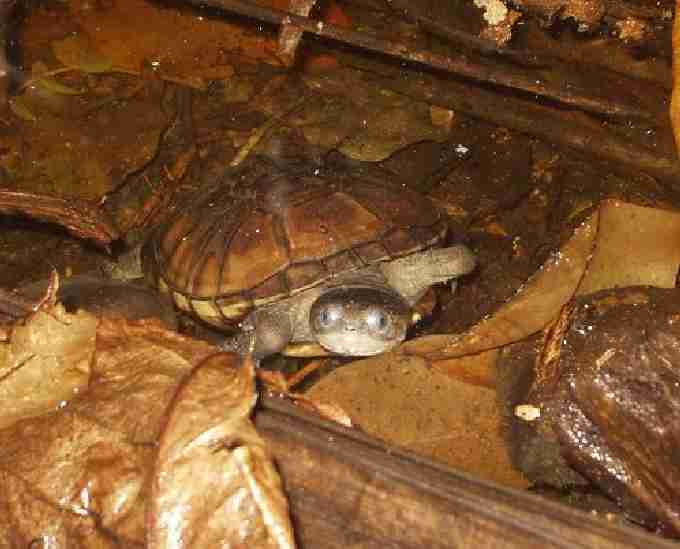
Fig. 5. Released juvenile black mud turtle.
From 2009 the terrapin project concentrated on determining the breeding requirements of P. castanoides. Eggs had been produced on several occasions but hatching success was very low. Most eggs developed well and started to hatch but then the babies died once they had broken the egg-shell, resulting in over 70% mortality during hatching. Only three juveniles successfully hatched. From 2009 the intention was to solve the breeding problems.Several different pairing approaches had been tried: pairs had been kept together, one female had been kept with two males, one male with two females and females had been rotated between ponds with just females and with just males. Eggs had only been produced by the rotation system, but there were several years when this system did not seem to work either. It was assumed that the hatching problem was due to incubation temperatures being too high, resulting in premature hatching, but more eggs were needed to test this hypothesis. It was hoped that 2011 would see progress towards solving these problems.
Changes on Silhouette island
In the mid 1980s a 12 room hotel had been built on Silhouette. In 2005 this was closed and a 110 room development started. The LaBriz hotel was completed in 2007, creating a radically different infrastructure and life in the island’s settlement (Fig. 6). The two years of construction were highly disruptive and tortoise egg fertility dropped dramatically at that time, presumably due to disturbance. Following completion of the hotel, further disturbance was occasioned by construction of a small hotel (La Belle Tortue) next to the tortoise enclosures (Fig. 7). This was completed in 2009. The new LaBriz hotel established good relations with NPTS, recognising the invaluable nature of the tortoise project as a tourist attraction. The hotel provided transport to NPTS and assistance with enclosure maintenance, in addition to support with other projects.
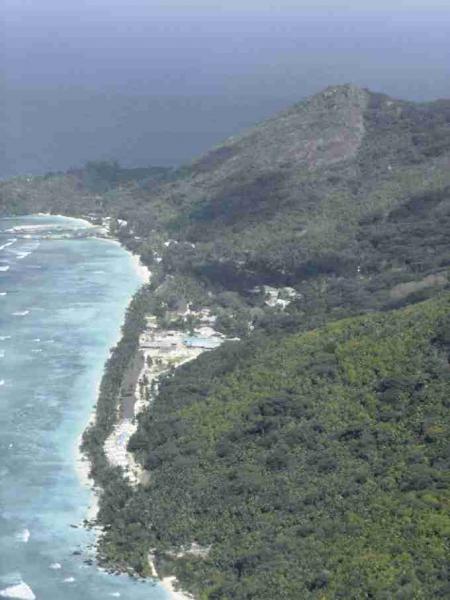
Fig. 6. Aerial view of LaBriz hotel during construction.
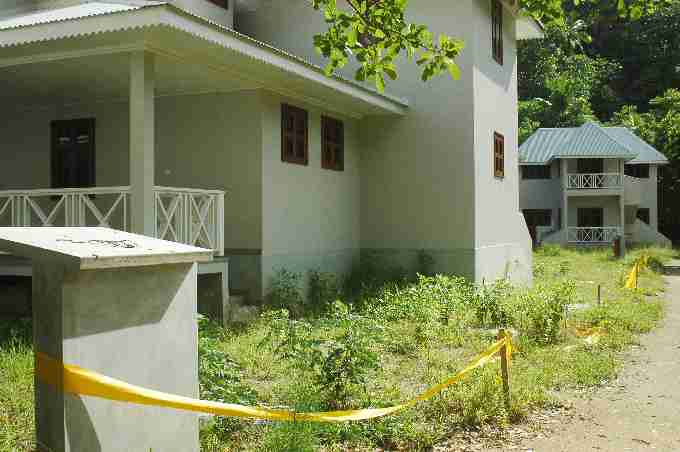
Fig. 7. La Belle Tortue just after completion.
In 2005 the construction of a road across the island was proposed to allow construction of another hotel, this time on the far side of the island at Grande Barbe. This proposal by developers and IDC was opposed by NPTS due to the environmental damage it would cause. In 2008 the Seychelles government rejected the proposal. As a result the hotel project for Grande Barbe was cancelled. This resulted in strained relations between NPTS and IDC. After several years of campaigning by NPTS most of Silhouette was declared a National Park in 2010. It was anticipated that this would improve conservation management on the island.
Reintroduction planning
The first release of juvenile tortoises was planned for 2010; plans were summarised in NPTS reports to IDC and to the Seychelles Ministry of Environment in 2009 and preparations made for the first release of D. arnoldi juveniles in April 2010. A reintroduction plan was prepared and a request for IDC approval was made, but the response was delayed pending circulation among IDC’s conservation advisors. The advice received by IDC was positive but IDC management rejected the proposal in September 2010. This unexpected blow was followed by a notice of eviction of NPTS from Silhouette island in December 2010.
NPTS appealed to IDC to change this decision. When this was unsuccessful, attempts were made to make the case to allow the tortoises to be reintroduced to the island. This was rejected by IDC and the Ministry of Environment in January 2011 on the grounds that they consider poaching of tortoises on Aldabra and Curieuse islands to be uncontrolled and claimed that they would be stolen from Silhouette, despite the island being a National Park. Proposals that experimental releases using radio-tagged animals monitored by independent researchers should be carried out were also rejected (G. Rocamora, pers. comm.). Given this impasse it became impossible to achieve the aim of re-establishing tortoises on Silhouette. No alternative suggestions were provided and NPTS was given three months to remove all projects from Silhouette.
Release of terrapins
The closure of the terrapin project was relatively easy to achieve: in December 2010 we released all the remaining captive terrapins (P. castanoides) in the lake at the LaBriz hotel (Fig. 8). This marsh was occupied by a relict population (one pair) and some breeding had been recorded there in 2008 and 2009. The released terrapins are habituated to human presence and are seen regularly in the lake.
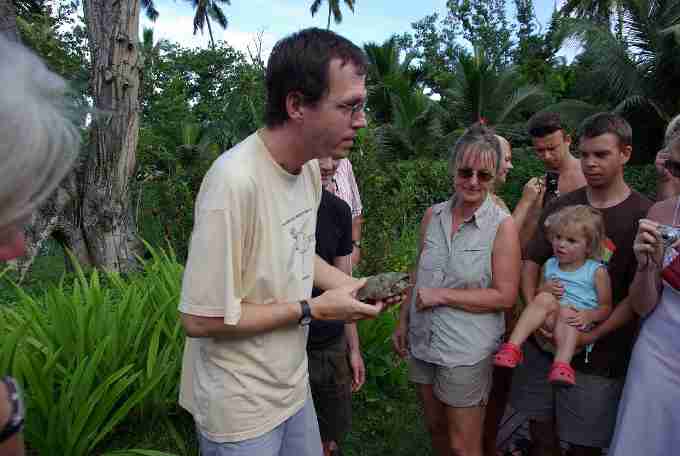
Fig. 8. Involving hotel guests in the release of yellow-bellied mud turtles at LaBriz.
Removal of tortoises from Silhouette
Two private islands with strong conservation management agreed to take NPTS tortoises in January 2011. Cousine island is a small (26 hectare) reserve and North a larger island (210 hectares) undergoing restoration. Cousine already had 30 Aldabran tortoises, two male hololissa and one female arnoldi, but no breeding had been recorded. On North there are about 55 Aldabran tortoises, several of which were bred on the island. Releasing our animals on these islands was not ideal as it meant mixing the different tortoise types and so risking genetic pollution, but with the forced closure of our projects and a complete lack of support from the Seychelles government this was unavoidable.
In February and March 38 juvenile arnoldi were transferred to North (Figs 9-10) and plans to transfer the last 92 were made for April 2011. However, a further disaster occurred when the island’s new owners decided that tortoises were unsightly and messy and further releases did not fit their intended image of their luxury hotel. Fortunately an alternative arrangement has been made with Fregate island and the remaining arnoldi were moved in May. Fregate has had a healthy population of Aldabran tortoises for at least 60 years and is a well protected private island. In April the six adult and 42 juvenile hololissa were transferred to Cousine island (Figs 11-12).
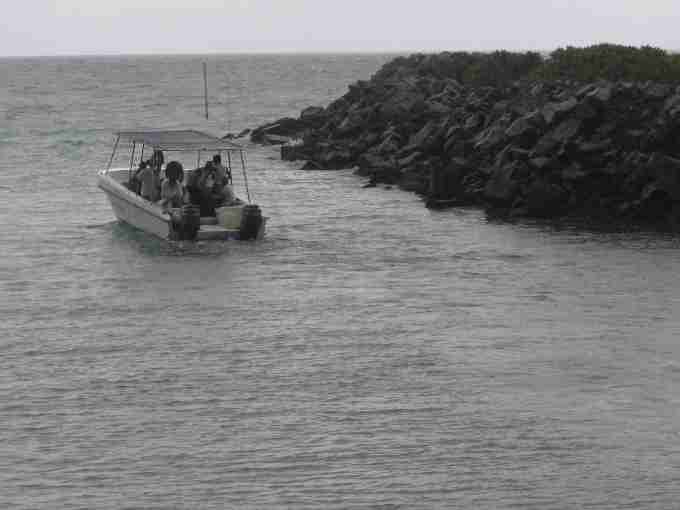
Fig. 9. Sending tortoises to North island.

Fig. 10. Arrival on North (photo courtesy of North island).

Fig. 11. Adam being sent to Cousine.
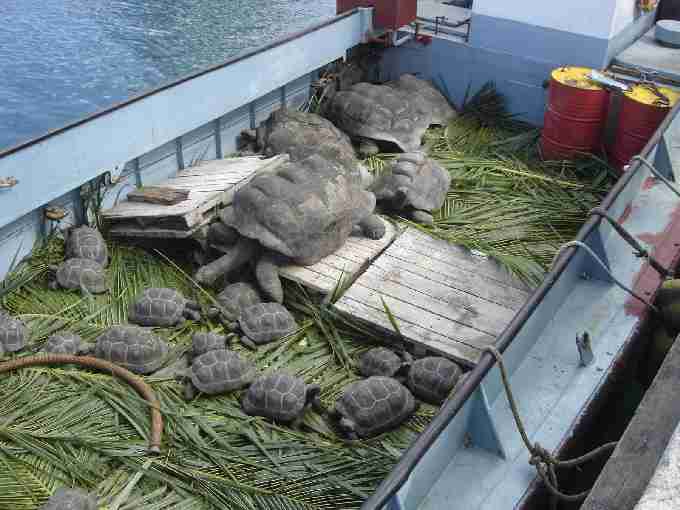
Fig. 12. Tortoises going to Cousine.
Prior to release, most of the tortoises were microchipped with the generous support of the British Chelonia Group. The first 38 had been moved before the microchips were available and had to be relocated on North island and chipped in the field. This provided an opportunity to check that they were adapting well to their liberty. Tortoises had been released on the coastal plateau and on one of the rocky hills of the island; in both localities the tortoises were found to have settled into their new environments (Figs 13-14).
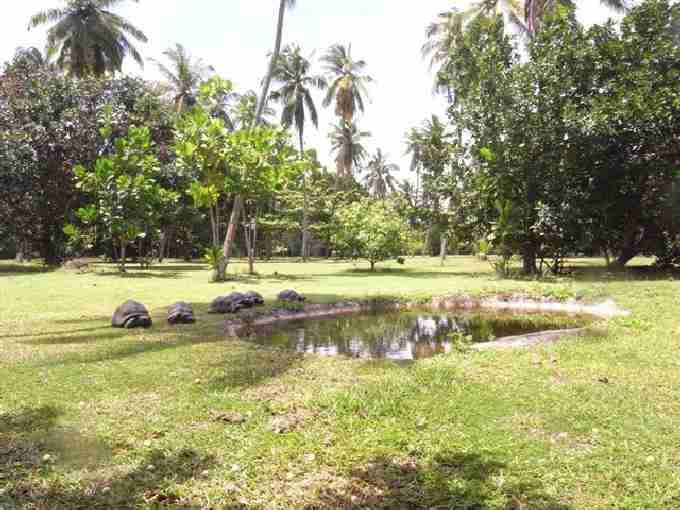
Fig. 13. Tortoises on the plateau on North just after arrival (photo courtesy of North island).

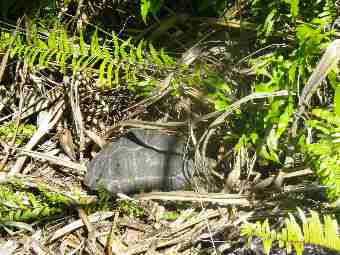
Fig. 14. Tortoise hidden in dense vegetation on the hill of North island, tortoise in the foreground.
Summary
NPTS and its supporters have invested considerable financial resources and time in the conservation of the tortoises and terrapins of Seychelles (Table 2). The eviction of NPTS from Silhouette and the refusal to allow wild tortoises onto Silhouette represent a great blow for the new National Park and a missed opportunity to restore the island. The Seychelles government’s lack of interest in tortoise conservation means that the opportunity to restore the ancient diversity of the tortoises is being missed. However, we take consolation from the fact that 14 years of work and the support from all our international supporters who care about tortoises means that another generation of Seychelles giant tortoises has been produced. These will live on for at least another 100 years.
Table 2. Summary of investment in chelonian conservation from 1995 to 2011 (excluding final transfer to Fregate).
| Item | | Expenditure (£) | Source |
|---|
| Tortoises | | | |
| Research | Taxonomic | 3,060 | NPTS |
| Genetic sampling | 4,300 | International Market Supply, CRF, NPTS |
| Genetic analysis | 35,700 | Genetics laboratories |
| Ecological | 16,500 | Volunteers, NPTS |
| Breeding | Enclosures | 950 | IDC, LaBriz, NPTS |
| Purchase & transport | 400 | BCG & private sponsors |
| Labour | 148,300 | IDC & NPTS |
| Monitoring & maintenance | 8,000 | NPTS |
| Incubators | 800 | CI, BCG, private sponsors |
| Grande Barbe release | Transport, labour & monitoring | 2,150 | Volunteers, NPTS, NSV, BCG, IDC |
| Transfer to other islands | Transport, labour & tagging | 4,150 | North island, Cousine island, BCG, NPTS |
| Total | | 224,310 | NPTS contribution: £139,280 |
|---|
| | | | |
| Terrapins | | | |
|---|
| Research | Population monitoring | 6,330 | NPTS, CRF, BCG |
| Ecological research | 3,400 | NPTS |
| Captive breeding | Capture & transport | 600 | NPTS |
| Enclosures & aquaria | 2,500 | NPTS, private sponsors |
| Incubators | 500 | NPTS, BCG |
| Feeding | 4,230 | S. Barnes & G. Van Heygen |
| | North | 95 | FFEM |
| Silhouette | 200 | NPTS |
| Radio tracking | 4,720 | NPTS, BCG |
| Total | | 22,575 | NPTS contribution: £9,800 |
|---|
Acknowledgements
The research and conservation work on Seychelles terrapins and tortoises by NPTS has only been possible through the generous support of our sponsors. The largest single supporting organisation has been the British Chelonia Group which has consistently supported all aspects of our work both financially and morally. Without this support none of what we have managed to achieve would have been possible. We have also been generously supported by the Nederlands-Belgische Schildpadden Vereniging, Turtle Conservation Fund, Conservation International and many private supporters. I am also grateful to Jill Pearson for providing excellent microchipping training.
References
Gerlach, J. (2002a). Seychelles Terrapin Action Plan. Phelsuma 10B: 1-16.
Gerlach, J. (2002b). First results of radio-tracking black mud turtles Pelusios subniger parietalis. Phelsuma 10: 58-60.
Gerlach, J. (2002c). A new alien pond weed (Elodea sp.) in Seychelles. Phelsuma 10: 60.
Gerlach, J. (2003). Five years of conserving Seychelles Chelonia. Testudo 5(5): 30-41.
Gerlach, J. (2004). Giant Tortoises of the Indian Ocean. Chimiara publishers, Frankfurt.
Gerlach, J. (2005). Breeding and reintroduction of Seychelles Chelonia. Testudo 6(2): 56-64.
Gerlach, J. (2008). Fragmentation and demography as causes of population decline in Seychelles terrapins. Chel. Conserv. Biol. 7: 77-86.
Gerlach, J. & Canning, K.L. (2001). Range contractions in the critically endangered Seychelles terrapins (Pelusios spp.). Oryx 35: 313-320.
Turtle Taxonomy Working Group [Rhodin, A.G.J., van Dijk, P.P., Iverson, J.B., & Shaffer, H.B.] (2010). Turtles of the world, 2010 update: annotated checklist of taxonomy, synonymy, distribution and conservation status. In: Rhodin, A.G.J., Pritchard, P.C.H., van Dijk, P.P., Saumure, R.A., Buhlmann, K.A., Iverson, J.B. & Mittermeier, R.A. (eds). Conservation Biology of Freshwater Turtles and Tortoises: A Compilation Project of the IUCN/SSC Tortoise and Freshwater Turtle Specialist Group. Chelonian Research Monographs No. 5, pp. 000.85-000.164, doi:10.3854/crm.5.000.checklist.v3.2010, www.iucn–tftsg.org/cbftt/.
Testudo Volume Seven Number Three 2011.
Top















